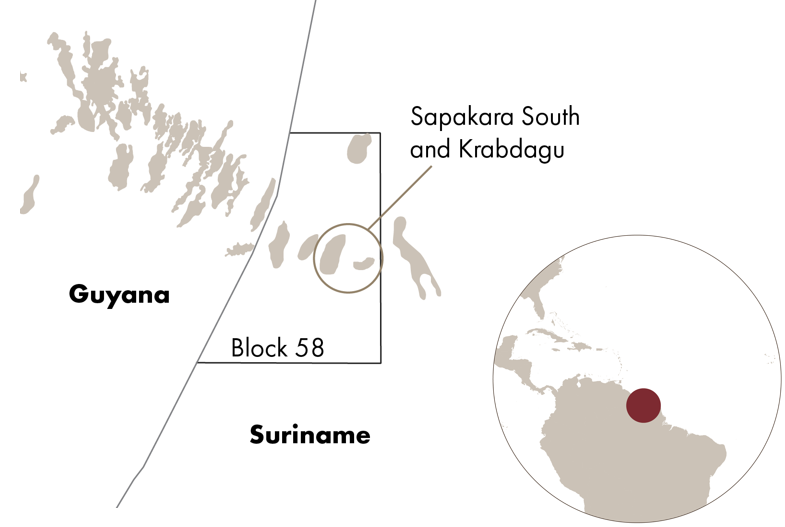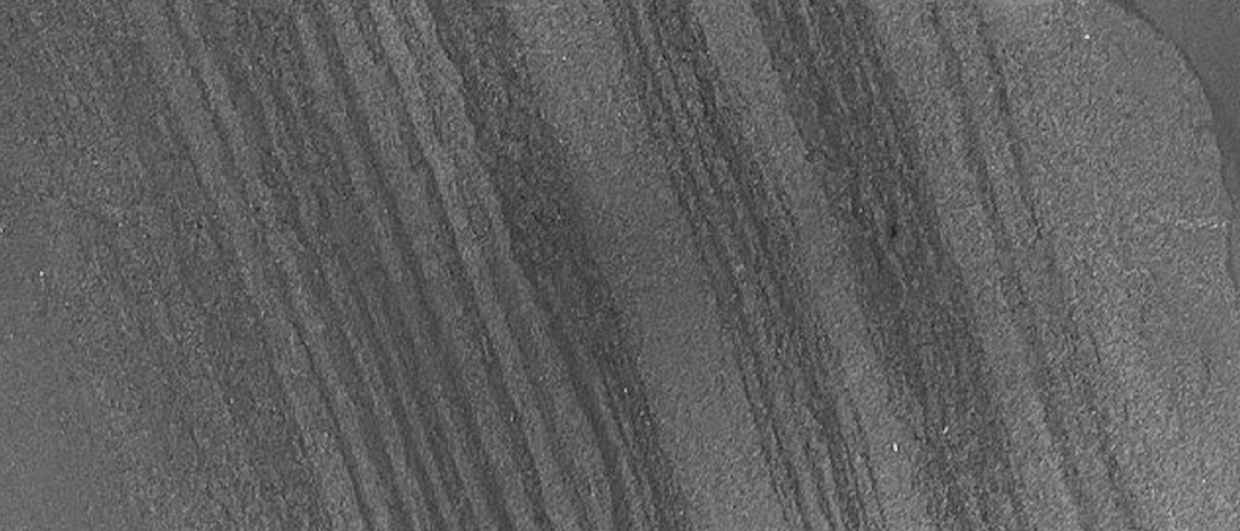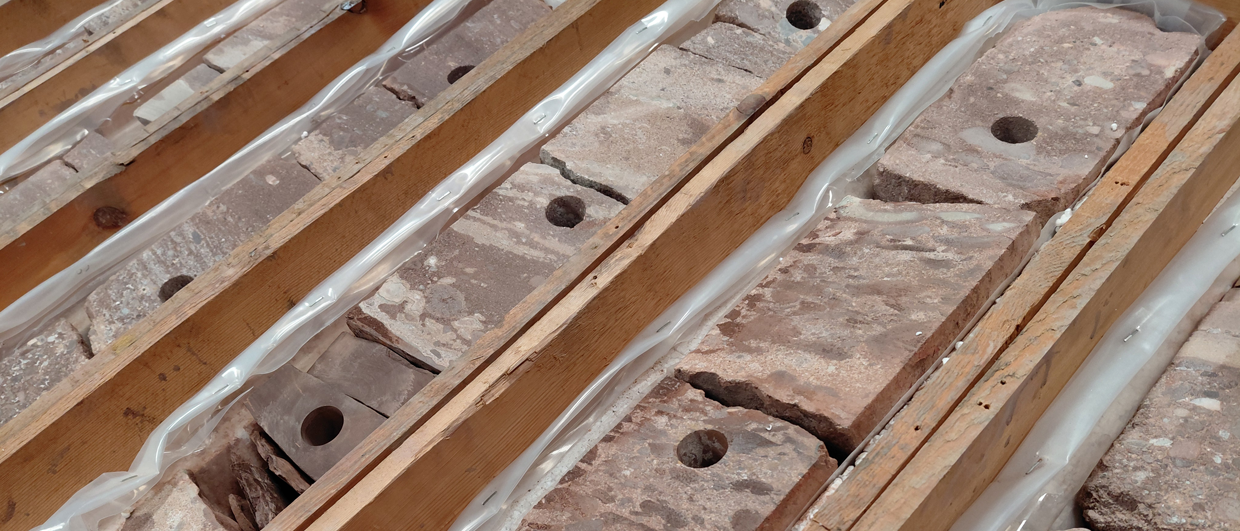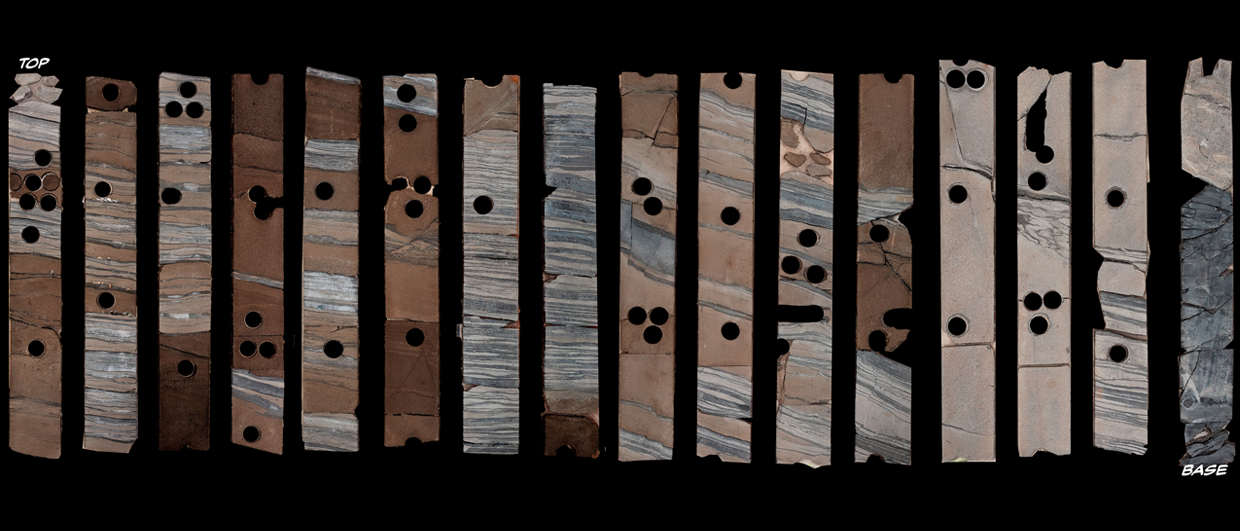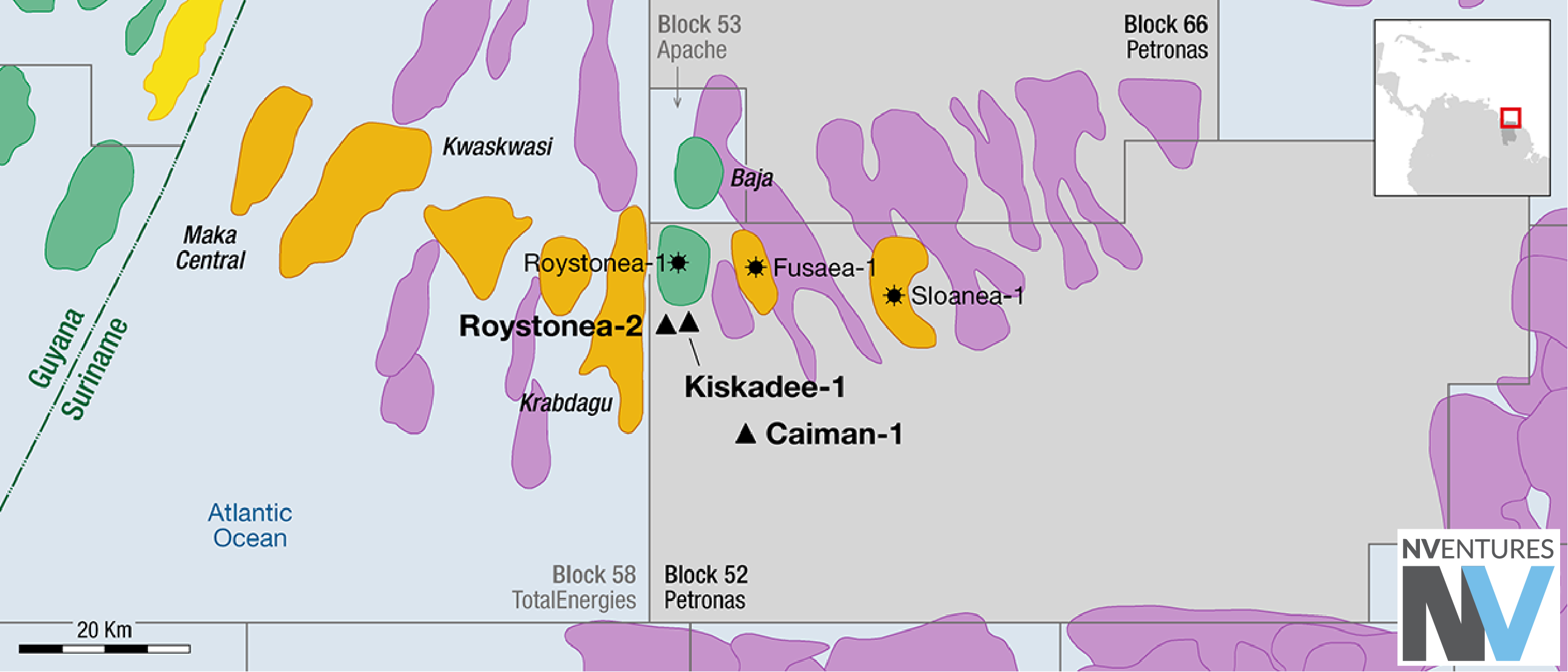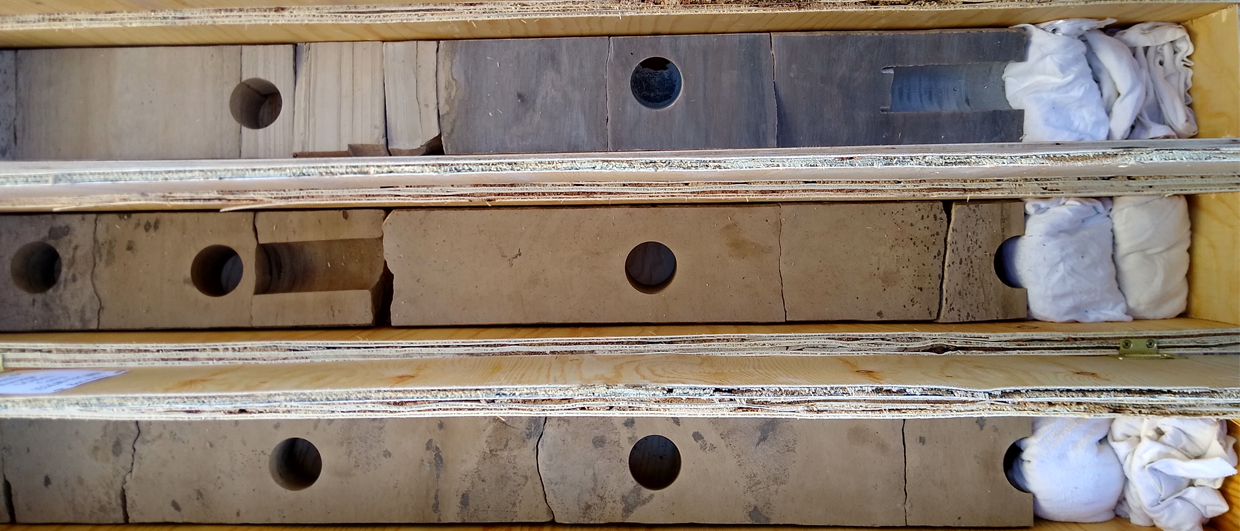 The Suriname-Guyana basin is a genuine exploration hotspot these days. But it is not only a hotspot from an economical point of view, it is also an area where new sedimentological insights emerge from as new seismic is being acquired and, as we show here, some core data are revealed to the public.
The Suriname-Guyana basin is a genuine exploration hotspot these days. But it is not only a hotspot from an economical point of view, it is also an area where new sedimentological insights emerge from as new seismic is being acquired and, as we show here, some core data are revealed to the public.
The core displayed here shows a sandy and oil-stained reservoir that is characterised by multiple cyclic mud drapes, some of them can even be described as double mud drapes. Given that this core is from the channel fill of a massive marine turbidite complex, it seems quite unusual to find double mud drapes, as these are often associated with tidal influence.
This suggests the turbiditic dynamic is not the only one to shape the deposit here. Continental margins are generally swept by contour currents that can reshape the turbiditic sediments by waning the turbidite flows and through transporting finer-grained sediment. In addition, deep bottom currents often comprise a tidal signal at any depth. Such tidal influence is already described in deep submarine valleys as a high-frequency modulation of geostrophic currents. It is possibly the effect of tidal influence on bottom currents that has caused these double mud drapes to form here.
Thanks to TotalEnergies and APA for granting permission to share this core photo.
TotalEnergies (operator of Block 58, with a 50% interest) and APA Corporation (50%) announced in September 2023 the launching of the development studies for a large oil project in Block 58, offshore Suriname. Combined resources close to 700 million barrels have been confirmed for the two fields under consideration, Sapakara South and Kabdagu. These reserves, located in water depths between 100 and 1,000 meters. will be produced through a system of subsea wells connected to a FPSO (Floating Production, Storage and Offloading unit) located 150 km off the Suriname coast, with an oil production capacity of 200,000 barrels per day. The project will represent an investment of approximately $9 billion.